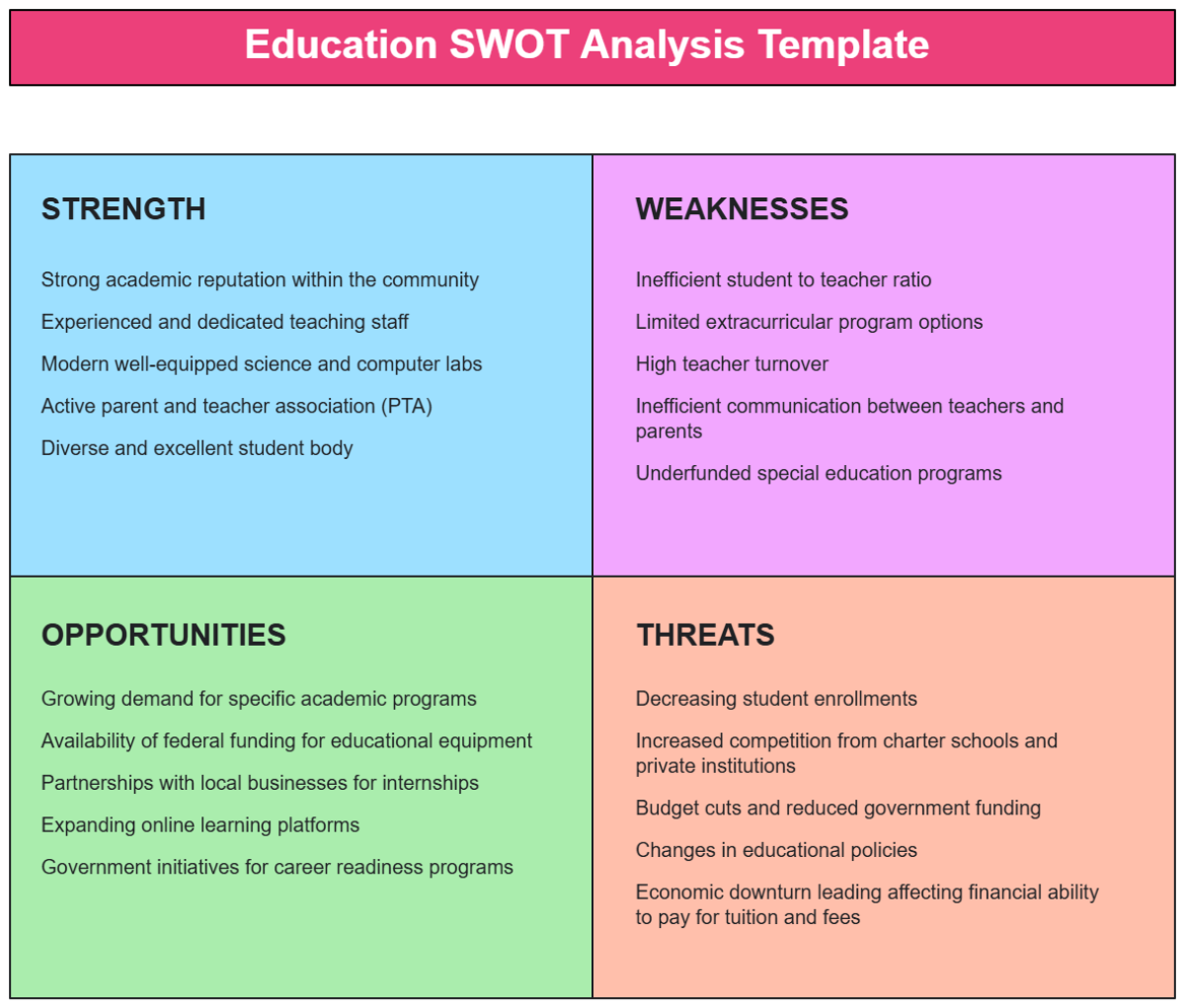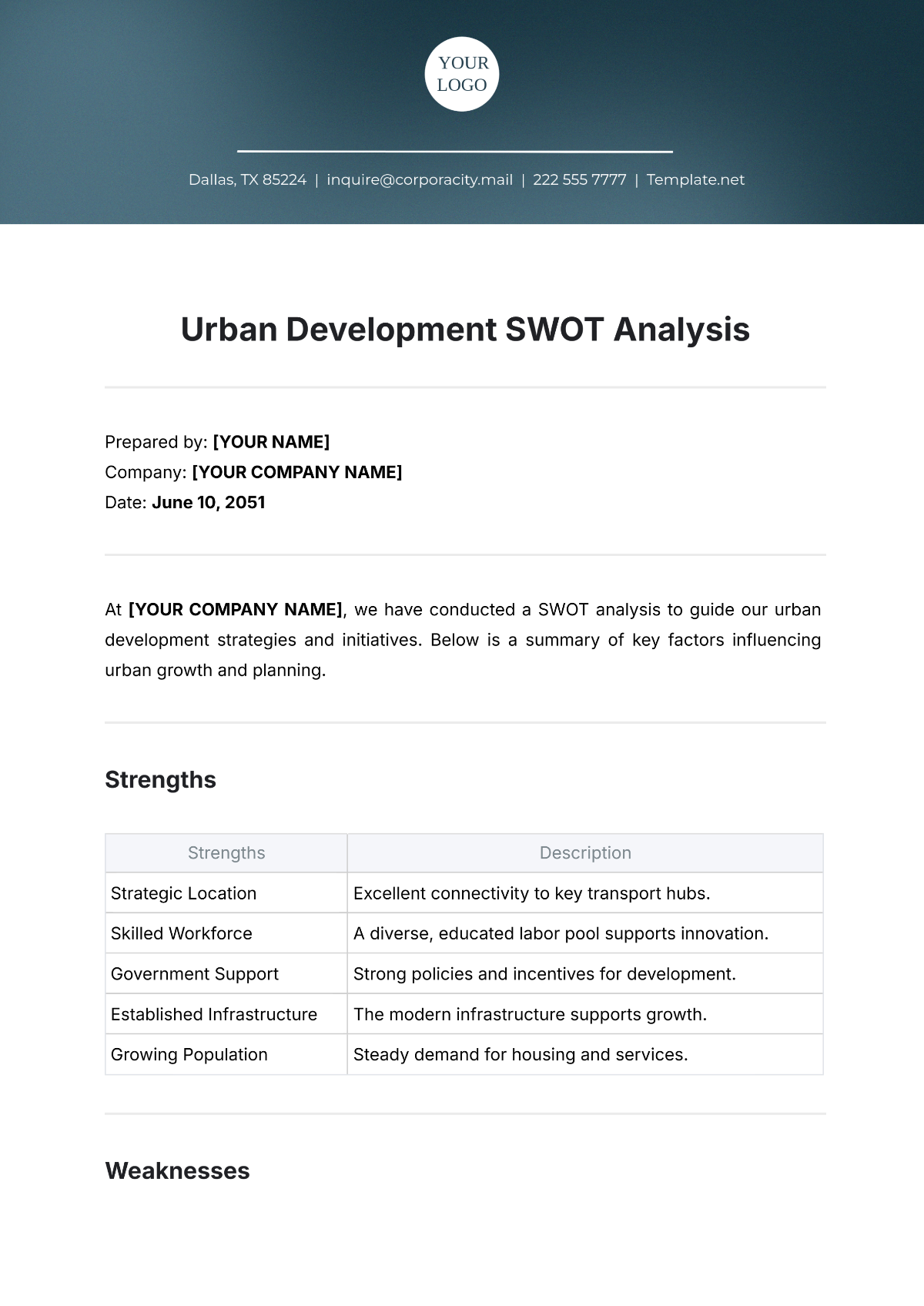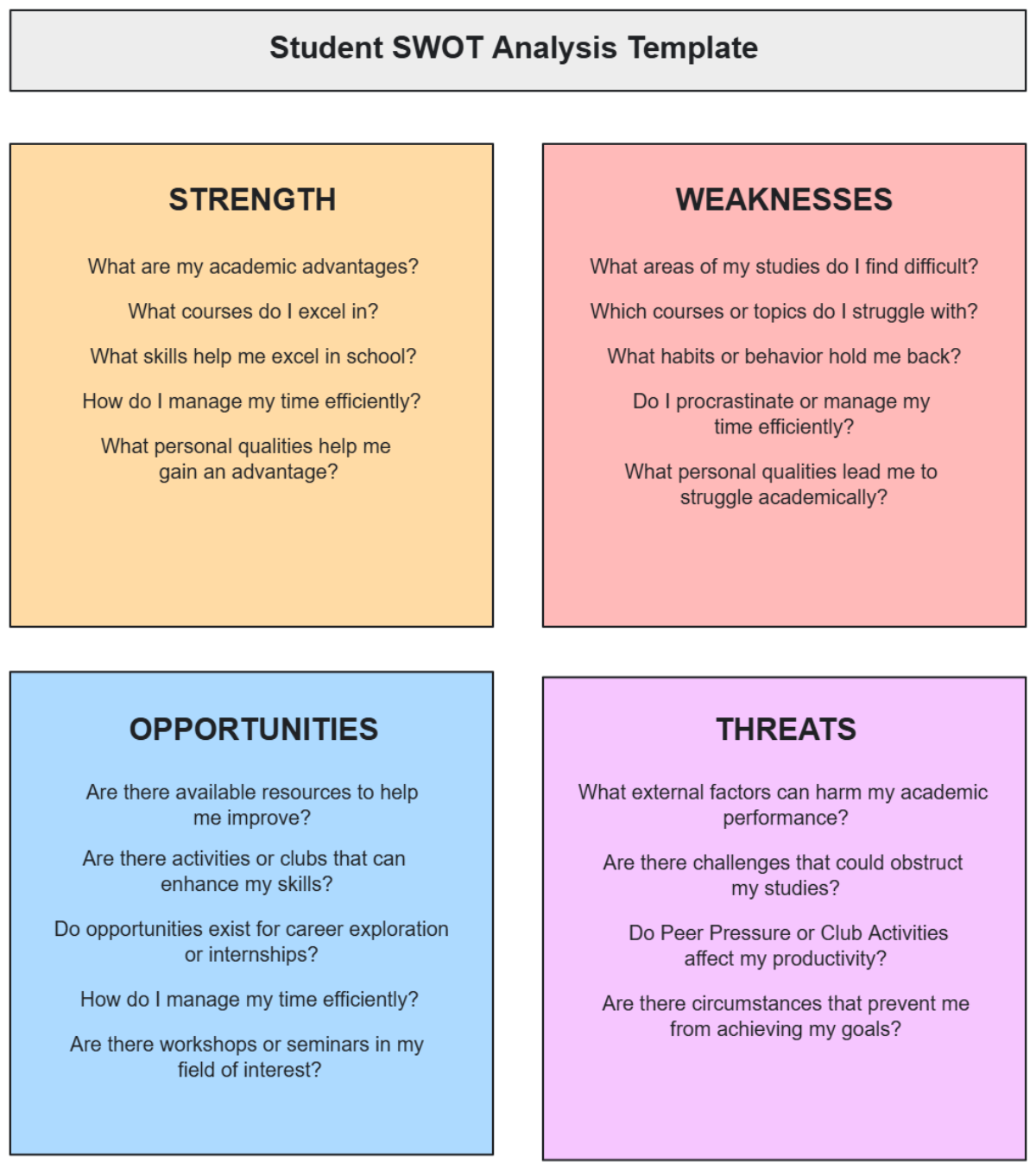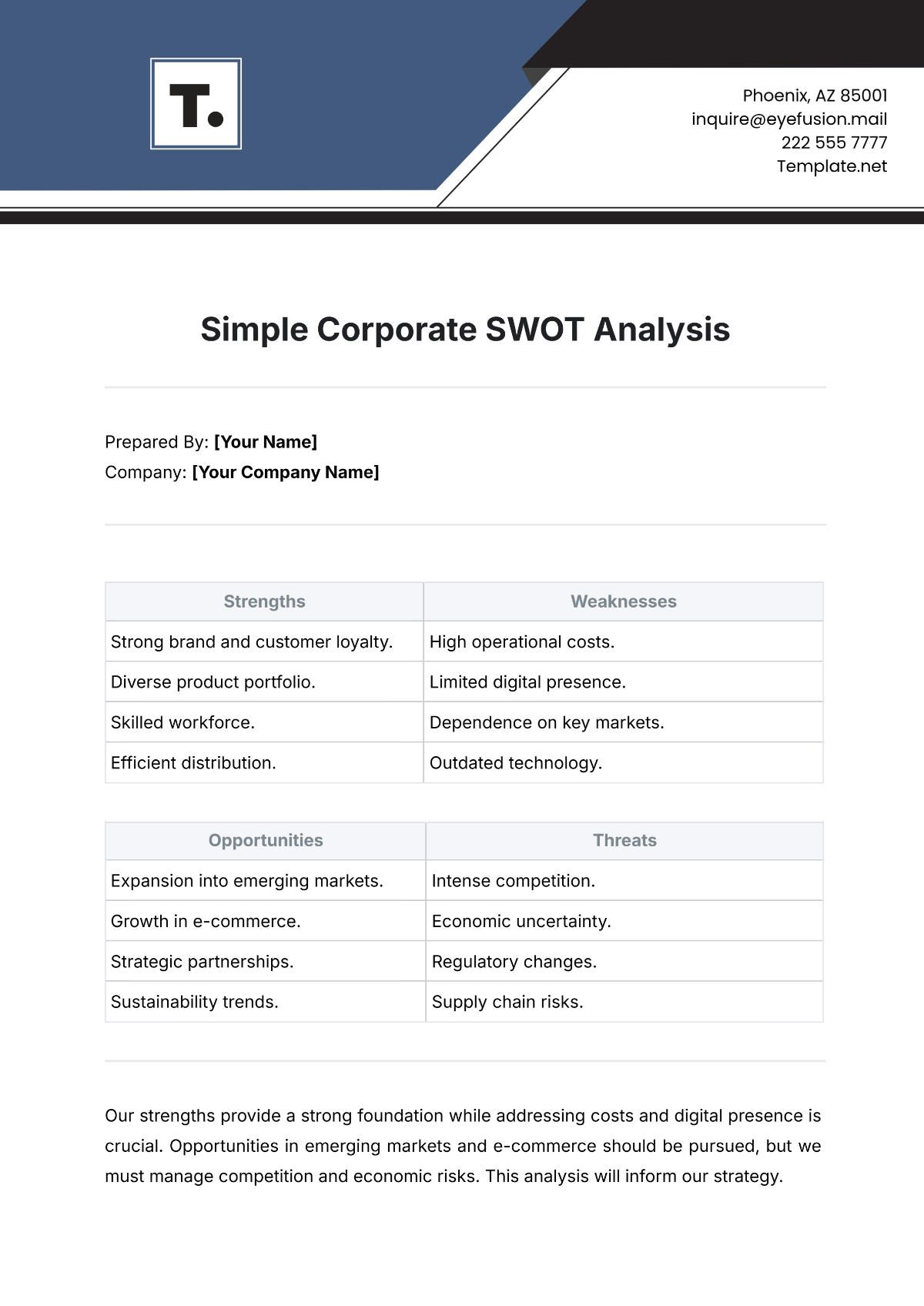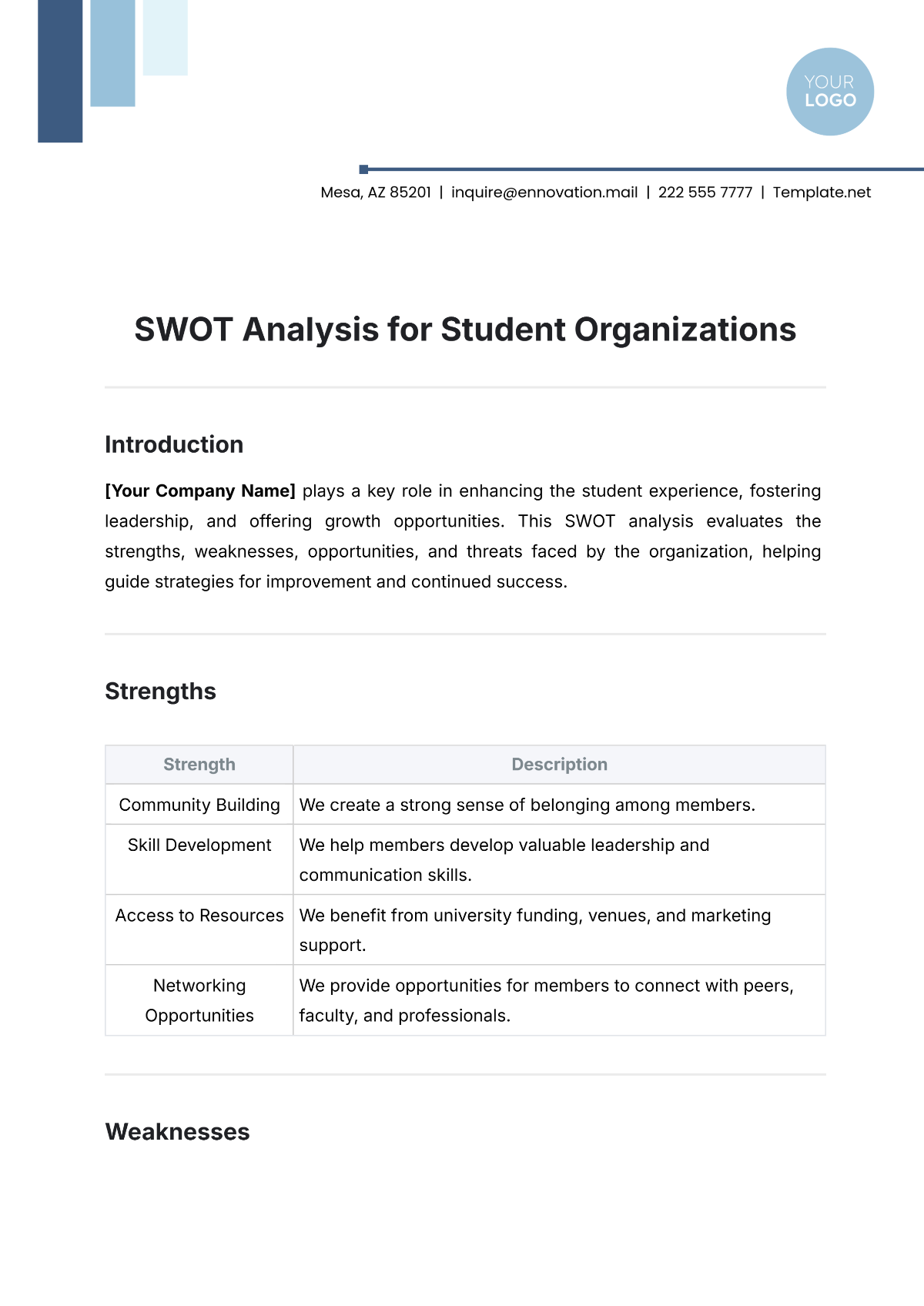Free School SWOT Analysis
Improve strategic planning in educational institutions with the School SWOT Analysis Template from Template.net. This editable and customizable tool features an intuitive AI Editor Tool, empowering administrators to assess Strengths, Weaknesses, Opportunities, and Threats effectively. Streamline decision-making and enhance school performance with this comprehensive template, tailored to meet the dynamic needs of modern educational environments.








